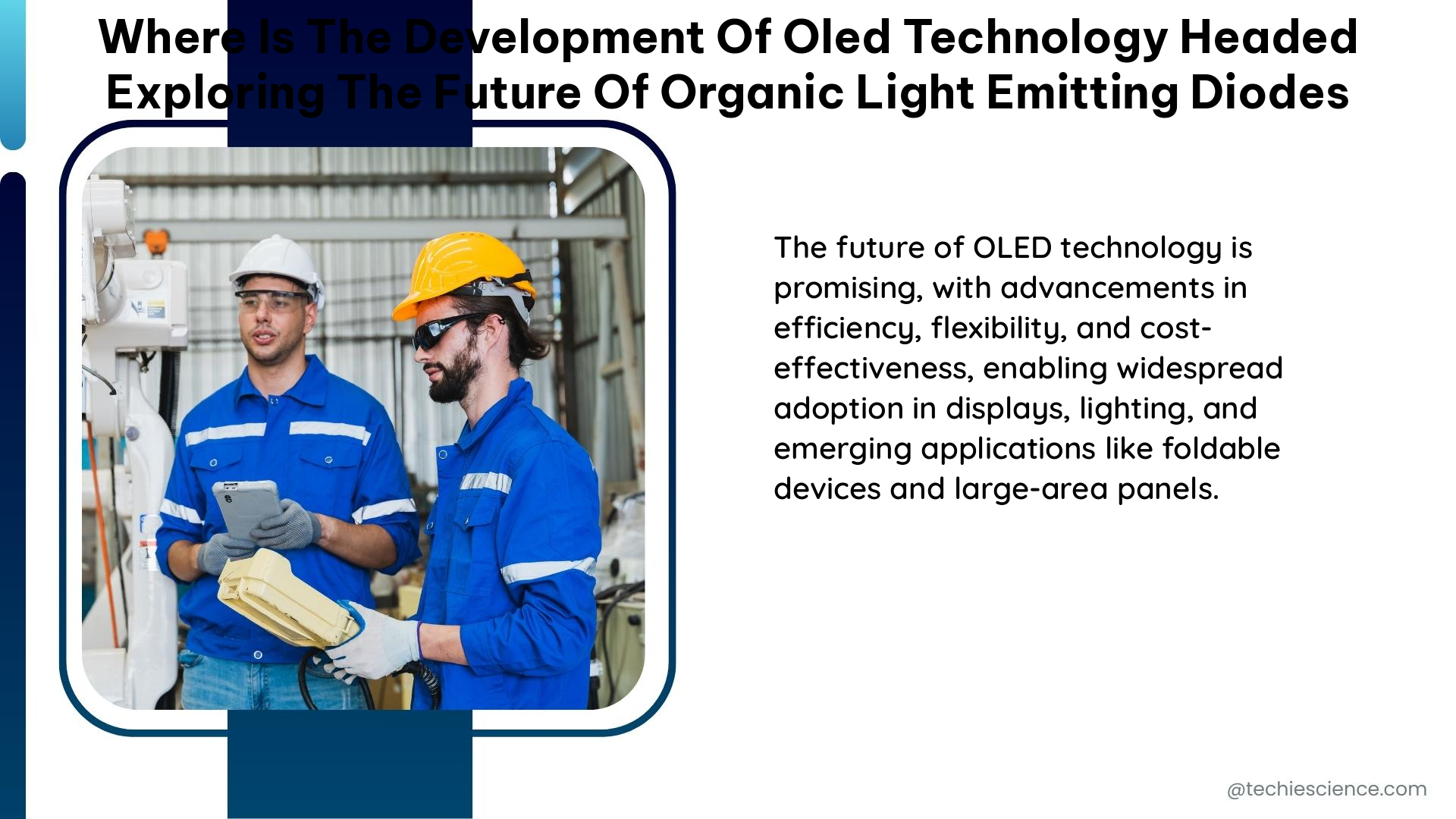The development of OLED technology is headed towards more flexible, transparent, and energy-efficient displays and lighting products. With advancements in materials, manufacturing processes, and device architectures, the future of OLED technology promises to revolutionize the way we interact with electronic devices and experience visual content.
Flexible OLED Displays: Paving the Way for Innovative Form Factors
One of the most exciting developments in OLED technology is the progress towards flexible and foldable displays. Flexible OLED panels are made possible by the use of plastic substrates, which are more durable and lightweight compared to traditional glass-based displays. However, these plastic substrates require improved barrier layers to protect the OLED materials from moisture and oxygen, which can degrade their performance.
To address this challenge, researchers are exploring various thin-film encapsulation techniques, such as atomic layer deposition (ALD) and plasma-enhanced chemical vapor deposition (PECVD), to create robust and flexible barrier layers. These advancements have the potential to enable the commercialization of thin and flexible metal- and glass-based OLED panels, which could become available as early as the second half of this decade.
| Key Metric | Current Status | Projected Future |
|---|---|---|
| Flexible OLED Display Shipments | 1.5 million units in 2019 | 53.4 million units in 2025 |
| Flexible OLED Display Market Size | – | $24.5 billion by 2023 |
OLED Market Growth: Driving the Transition to Next-Generation Displays

The OLED display market has been experiencing rapid growth, with the market for OLED flat panel displays forecast to increase from $12.2 billion in 2015 to $58.7 billion in 2024. During this period, OLED displays are expected to constitute over 40% of flat panel revenues, up from just 10.7% in 2015.
This growth is driven by the superior performance characteristics of OLED technology, including deeper blacks, higher contrast ratios, wider viewing angles, and faster response times compared to traditional LCD displays. As OLED manufacturing processes continue to improve and production costs decrease, OLED displays are becoming more accessible to a wider range of consumer electronics and industrial applications.
Advancements in OLED Materials and Device Architectures
To further enhance the performance and efficiency of OLED displays, researchers are exploring various advancements in OLED materials and device architectures.
PHOLED Technology
One such advancement is the development of phosphorescent OLED (PHOLED) technology. Starting in 2024, blue PHOLED subpixel materials are expected to become available to display manufacturers for use in their OLED TVs. This technology is anticipated to improve the power efficiency and peak brightness of OLED displays, making them even more energy-efficient and visually stunning.
Plasmonic PHOLED
Another promising technology is the plasmonic PHOLED, which is being developed by Universal Display Corporation (UDC). Plasmonic PHOLED is expected to double the efficiency of OLED devices, potentially revolutionizing the performance of OLED TVs. However, this technology is still in the research and development stage, and there is no definitive timeline for its commercial availability.
The Rise of MicroLED Displays: Challenging OLED’s Dominance?
While OLED technology has been the dominant display technology in recent years, a new contender has emerged in the form of MicroLED displays. MicroLED TVs offer several advantages over OLED, including higher brightness, longer lifespan, and the potential for lower power consumption.
Currently, MicroLED TVs are prohibitively expensive, with the average price exceeding $100,000. However, as production costs decrease and manufacturing processes improve, MicroLED TVs are expected to become more affordable and accessible to a wider consumer base.
| Metric | Current Status | Projected Future |
|---|---|---|
| Average MicroLED TV Price | > $100,000 | Prices starting to drop below $100,000 |
Conclusion
The future of OLED technology is bright, with advancements in flexible displays, improved materials and device architectures, and the potential for increased market dominance. While MicroLED displays pose a challenge, OLED technology continues to evolve and adapt to meet the demands of the ever-changing display landscape.
As an electronics student, it’s essential to stay informed about the latest developments in OLED technology and understand how these advancements can shape the future of display and lighting applications. By staying up-to-date with the technical details and quantifiable data points, you can better prepare yourself for the exciting opportunities that lie ahead in the world of organic light-emitting diodes.
Reference:
- The Future of OLED Technology
- The Future of OLEDs
- What’s Coming After OLED? Here’s How TVs Could Evolve in the Next 5 Years
- OLED Display
- The Future is Bright for OLED Technology

The lambdageeks.com Core SME Team is a group of experienced subject matter experts from diverse scientific and technical fields including Physics, Chemistry, Technology,Electronics & Electrical Engineering, Automotive, Mechanical Engineering. Our team collaborates to create high-quality, well-researched articles on a wide range of science and technology topics for the lambdageeks.com website.
All Our Senior SME are having more than 7 Years of experience in the respective fields . They are either Working Industry Professionals or assocaited With different Universities. Refer Our Authors Page to get to know About our Core SMEs.